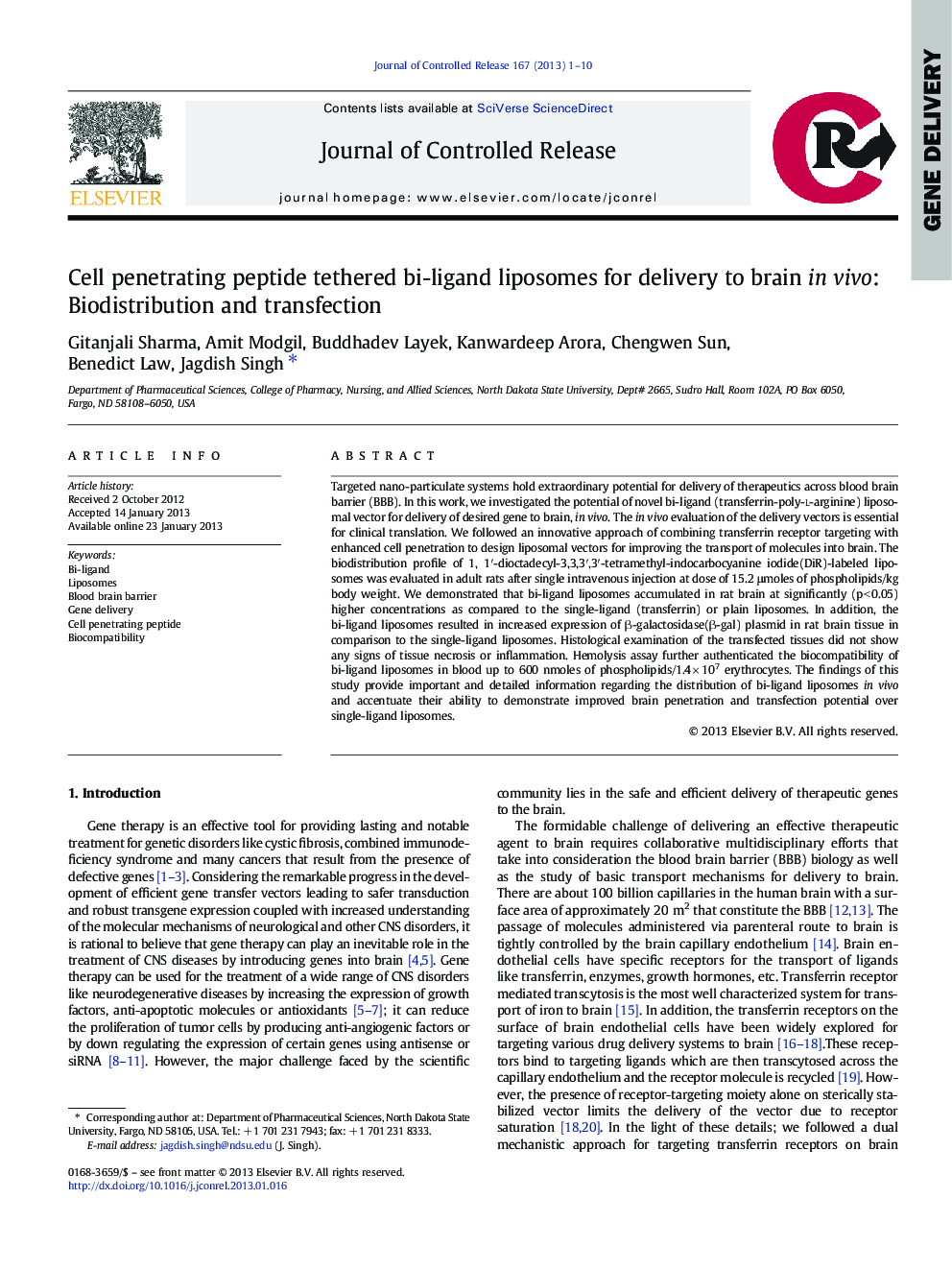| Article ID | Journal | Published Year | Pages | File Type |
|---|---|---|---|---|
| 1424473 | Journal of Controlled Release | 2013 | 10 Pages |
Targeted nano-particulate systems hold extraordinary potential for delivery of therapeutics across blood brain barrier (BBB). In this work, we investigated the potential of novel bi-ligand (transferrin-poly-l-arginine) liposomal vector for delivery of desired gene to brain, in vivo. The in vivo evaluation of the delivery vectors is essential for clinical translation. We followed an innovative approach of combining transferrin receptor targeting with enhanced cell penetration to design liposomal vectors for improving the transport of molecules into brain. The biodistribution profile of 1, 1′-dioctadecyl-3,3,3′,3′-tetramethyl-indocarbocyanine iodide(DiR)-labeled liposomes was evaluated in adult rats after single intravenous injection at dose of 15.2 μmoles of phospholipids/kg body weight. We demonstrated that bi-ligand liposomes accumulated in rat brain at significantly (p < 0.05) higher concentrations as compared to the single-ligand (transferrin) or plain liposomes. In addition, the bi-ligand liposomes resulted in increased expression of β-galactosidase(β-gal) plasmid in rat brain tissue in comparison to the single-ligand liposomes. Histological examination of the transfected tissues did not show any signs of tissue necrosis or inflammation. Hemolysis assay further authenticated the biocompatibility of bi-ligand liposomes in blood up to 600 nmoles of phospholipids/1.4 × 107 erythrocytes. The findings of this study provide important and detailed information regarding the distribution of bi-ligand liposomes in vivo and accentuate their ability to demonstrate improved brain penetration and transfection potential over single-ligand liposomes.
Graphical abstractFigure optionsDownload full-size imageDownload high-quality image (250 K)Download as PowerPoint slide
